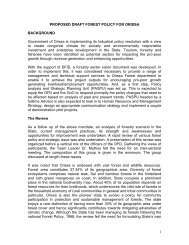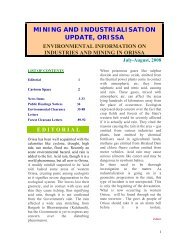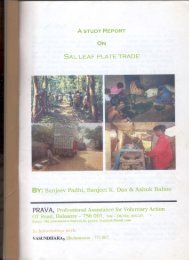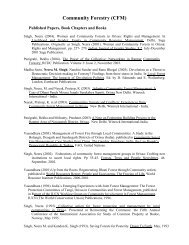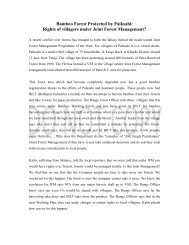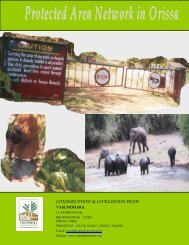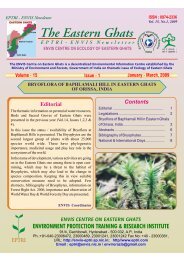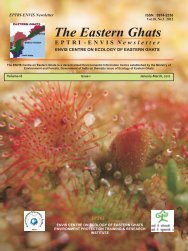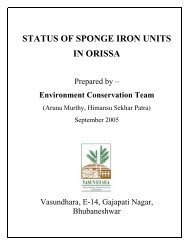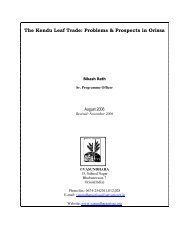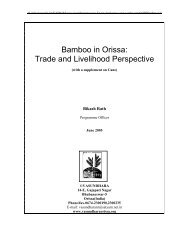DEVOLUTION OF FOREST MANAGEMENT - Vasundhara
DEVOLUTION OF FOREST MANAGEMENT - Vasundhara
DEVOLUTION OF FOREST MANAGEMENT - Vasundhara
- No tags were found...
You also want an ePaper? Increase the reach of your titles
YUMPU automatically turns print PDFs into web optimized ePapers that Google loves.
13A person from Harijan community was charged with a fine for cutting some tree, hepaid half the penalty amount and promised to give the balance after some time. Ongetting this news, the forester again fined that person despite the fact that thecommittee had already resolved the case. Also the committee did not put any objectionin this regard. While in several cases, when Agharia are involved the offender is let offrelatively easily.In Suruguda, the FD prepared a micro-plan for management of forests but this was notdone in a participatory fashion. This could be judged from the following instance.When we discussed with people we found that most of the villagers were not evenaware of such a micro-plan. The activities planned in this micro-plan were notexecuted. There was no effective involvement of village people for preparation of themicro-plan. The Forest Department is yet to internalise the concept of participatoryforest management and effectively involve village community in management offorests.3.6 <strong>FOREST</strong> AND LOCAL LIVELIHOODSForests play an important role in the livelihood of the people of Suruguda though therehas been a reduction in the extent of dependency over time.In Suruguda village, Agharia and Bhuians are the major landholders.The landless are especially dependent on forests for a variety of products both forsubsistence and sale. The households in the village were categorised into rich,medium, poor and very poor according to wealth status based on wealth ranking. Thelivelihood sources of these sub-groups are as follows:Sub-groups Livelihood sources(prioritised as per theincome derived fromthe respective sources)RichAgricultureServiceBusinessMedium Agriculture/ServiceSmall BusinessPoorLabourVery poor -Caste wise categorisation of differentsub-groups identified on the basis ofwealth ranking is given in table 2. Thedetailed criteria for wealth rankingarrived through sub-group discussion inthe village is given as annexure 1.Degradation of forest led to changes inthe livelihood pattern of the people,particularly the landless e.g. the Harijanpeople had to abandon head-loading andfuelwood selling and had to opt to workas manual labourers elsewhere which has become their primery source of income.With the regeneration of forests the availability of forest produces has increased andcontributing to their livelihood. Women play a greater role in collection processingand disposal of NTFPs. Some of the NTFPs are disposed at the doorstep, speciallythrough barter items like Sargi seeds Mahul are taken to market. However Kendu leafand Mahua fetch the people cash benefit. In all there activities women play a key roleand they have fair amount of control over this income. It ought to be added here thatMahua and Char contributes to the poor household in lean period where there is noother options are available.(please refer the following table )



